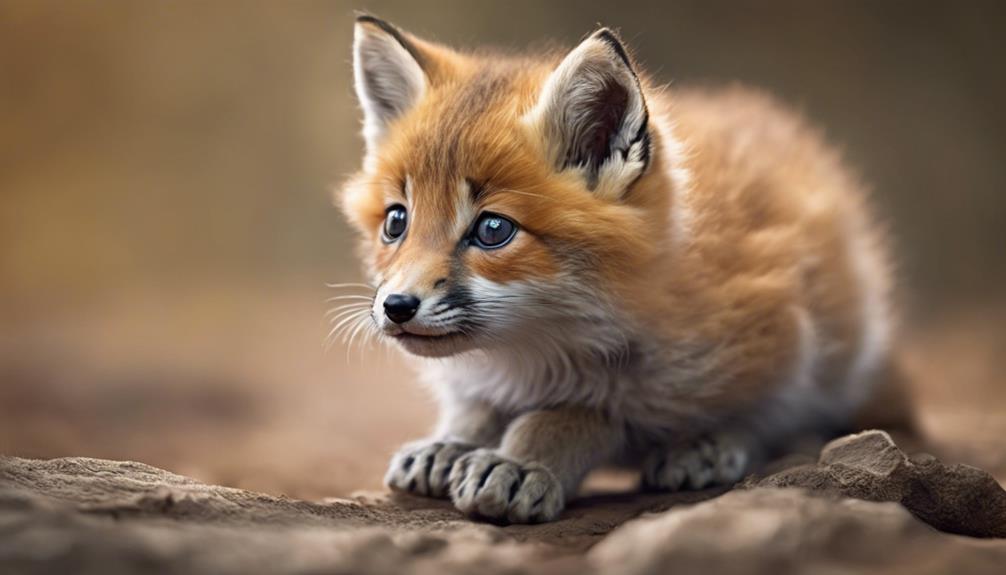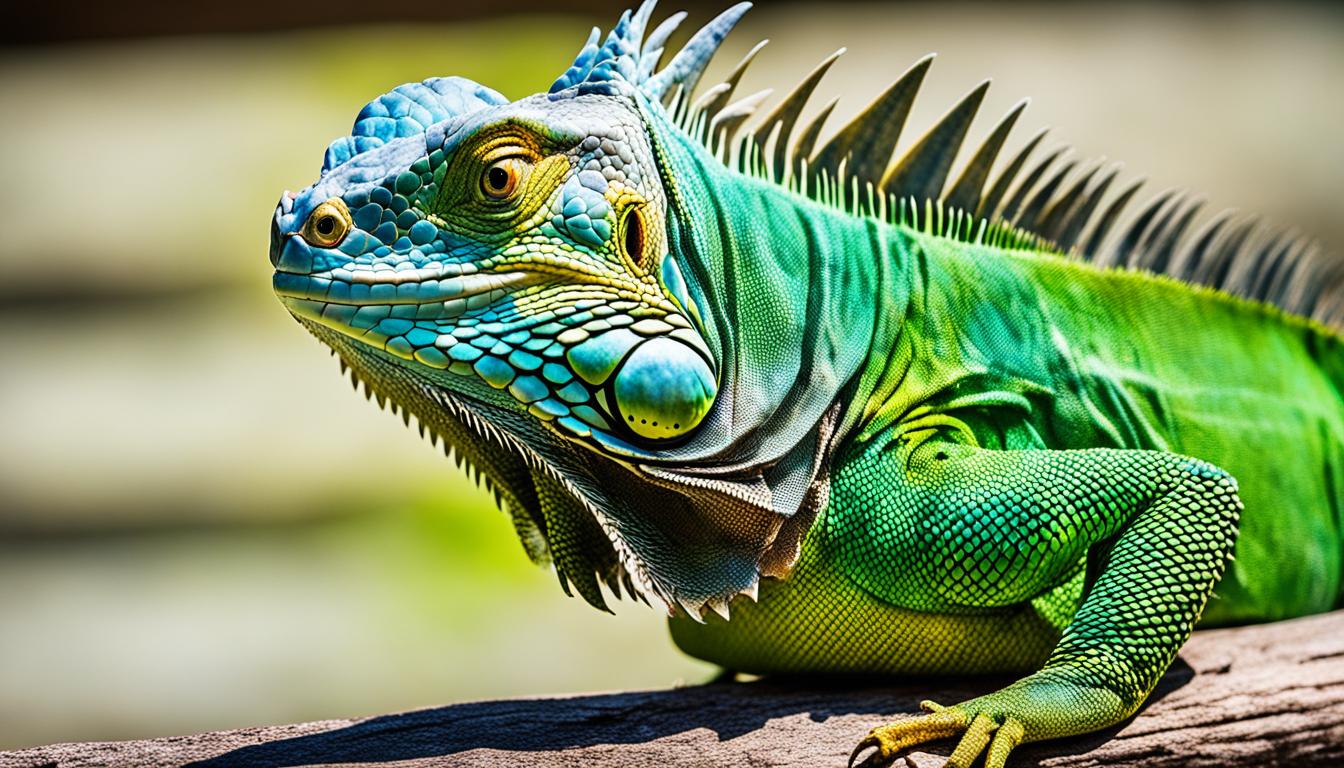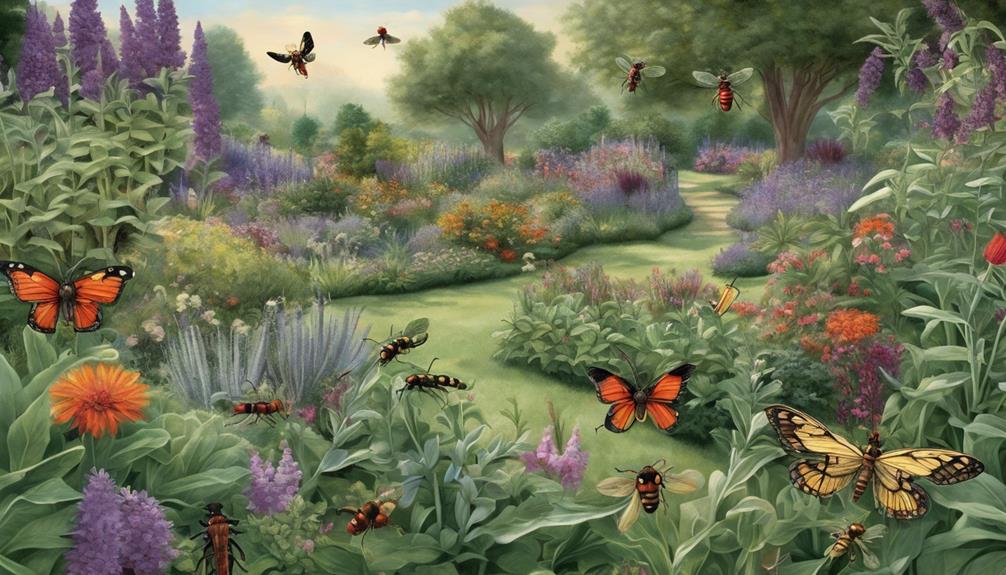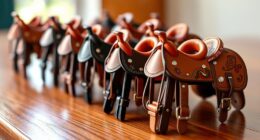I will lead you on a journey through intriguing animals with paws. From cats to dogs, their paw pads serve crucial functions. Bears, equipped with five toes and curved claws, are adept at digging and climbing. Raccoons showcase their skillful manipulation abilities. Otters possess sensitive paws for hunting underwater. Tigers rely on strong paws for hunting success. Elephants’ paw pads, filled with fatty tissue, offer cushioning and stability. Explore how these creatures’ paw adaptations aid them in flourishing in diverse habitats. Uncover the secrets of their distinct characteristics and behaviors to gain a deeper insight into the animal world.
Key Takeaways
- Feline and canine paws with specialized pads for various functions.
- Bear and raccoon paw adaptations for digging, climbing, and manipulation.
- Otters and tigers with unique paw features for hunting and swimming.
- Elephant paw pads with thick, cushioned structures for support and balance.
- Paw adaptations showcase evolutionary marvels aiding animals in diverse habitats.
Feline Paw Anatomy
Feline paws are intricate structures that play an essential role in a cat's daily activities and overall well-being. One indispensable component of a cat's paw anatomy is the paw pads. These specialized pads aren't just cute; they serve pivotal functions for our feline friends.
The digital pads, found on each toe, help with gripping and maneuvering, especially when climbing or hunting. Metacarpal and metatarsal pads provide support and cushioning, aiding in shock absorption when landing from jumps.
Moreover, cats have carpal pads on their front legs, adding extra traction and stability, particularly useful when sprinting or making sharp turns. These pads come in various colors, often matching the cat's coat, adding to their unique charm.
Beyond aesthetics, paw pads are rich in blood vessels and nerve endings, providing sensory information about the environment, enhancing balance and proprioception. Understanding the significance of these paw pads can deepen our appreciation for the grace and agility of our feline companions.
Canine Paw Functionality

As we delve into canine paw functionality, it's vital to comprehend the fundamentals of paw anatomy and how dogs utilize their paws in different daily activities.
From sprinting and excavating to grasping objects, a dog's paws play a pivotal role in their everyday functioning.
Paw Anatomy Basics
Canine paws play an essential role in a dog's daily activities, providing indispensable support and functionality for their movement and well-being. Unlike cats' paws, which have retractable claws, dogs' paws are structured with digital pads, metacarpal pads, and carpal pads that aid in traction and balance.
These paw pads also contain sweat glands that help dogs regulate body temperature. Dogs rely on their paws for shock absorption and navigation across various terrains, showcasing adaptability based on breed and lifestyle.
Understanding the anatomy of a dog's paw is important for ensuring their overall health. By appreciating the intricate design and functions of canine paws, we can better care for our furry companions and support their active lifestyles effectively.
Paw Functions Explained
Dogs rely on their paws for a multitude of functions that are vital to their daily activities and overall well-being. Canine paw pads act as shock absorbers, providing cushioning and balance, aiding in traction, stability, and weight support during various activities.
These paw pads also serve as protection against extreme temperatures and rough terrain. Additionally, dogs have scent glands in their paw pads, allowing them to mark territories and communicate with other animals.
The structure of a dog's paw varies based on breed and specific needs for locomotion and environmental adaptation, highlighting the versatility and importance of this essential body part in a dog's life.
Bear Paw Adaptations

Bear paws, with their five toes and long, curved claws, are uniquely adapted for digging and climbing. The rough pads on the soles provide excellent traction on various terrains, allowing bears to move with agility and stability. Additionally, the ability of bears to rotate their front paws 180 degrees is a significant adaptation that aids in climbing trees and grabbing objects with precision. These paw adaptations are vital for bears in activities such as fishing, hunting, and marking territories in the wild.
To provide a visual representation of bear paw adaptations, let's take a closer look at the unique features:
| Feature | Description |
|---|---|
| Five Toes | Provide balance and dexterity for various tasks |
| Long, Curved Claws | Ideal for digging, climbing, and catching prey |
| Rough Pads | Enhance traction on different surfaces |
| Rotating Front Paws | Aid in climbing trees and manipulating objects |
| Variable Sizes | Adapted based on species and habitat requirements |
These adaptations showcase the incredible versatility and functionality of bear paws in their natural environment.
Raccoon Paw Dexterity

Raccoon paw dexterity, akin to their bear counterparts, showcases remarkable adaptability and skill in manipulating objects with their agile front paws. These crafty creatures possess a unique set of abilities that allow them to excel in various tasks, much like their feline counterparts:
- Precision: Raccoons exhibit exceptional precision when using their front paws, similar to how cats carefully manipulate objects with their delicate paws.
- Coordination: The coordination of movements in a raccoon's paws is akin to the agility seen in cats, enabling them to perform intricate tasks with ease.
- Sensory Perception: Raccoons, like cats, rely on their keen sense of touch to explore and interact with their environment effectively.
Through their adept paw dexterity, raccoons navigate their surroundings with finesse, demonstrating a level of skill and adaptability that rivals even the most agile of feline companions.
Otter Paw Sensory Abilities
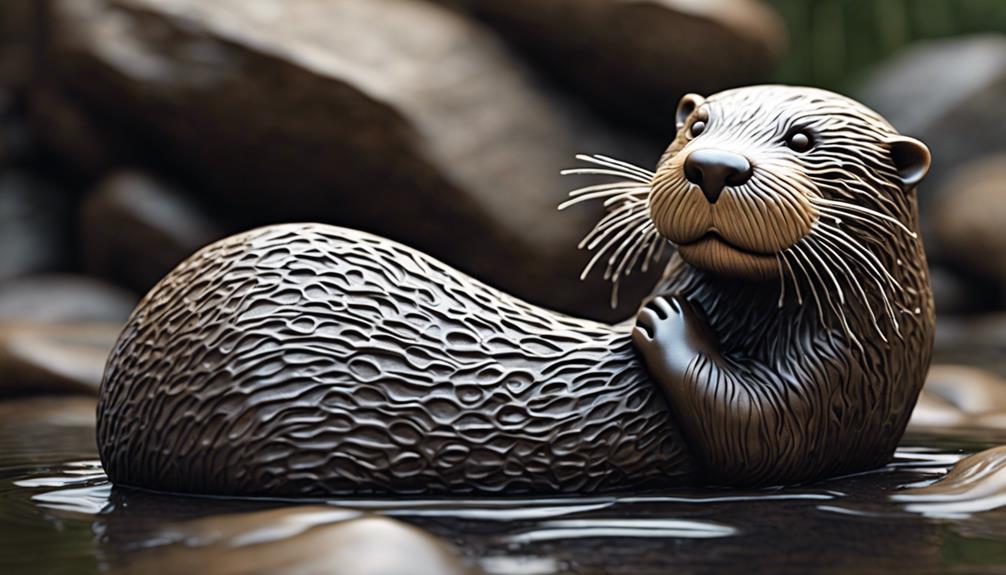
Highly sensitive paws equipped with specialized touch receptors called vibrissae enable otters to detect prey underwater by sensing vibrations. These vibrissae are filled with nerve endings that pick up even the slightest movements in the water, allowing otters to pinpoint the location of their next meal with remarkable accuracy.
Otter paw sensory abilities go beyond just hunting; they also play an important role in grooming, handling food, and manipulating objects. The dexterity of their paws, combined with the webbing between their digits, helps otters swim and dive gracefully in their aquatic habitat. The sense of touch through their paws is essential for otters to navigate and thrive in their environment.
Otters rely on their acute paw sensitivity to interact with the world around them, making their paws an essential tool for survival. By understanding how otters use their paws to sense vibrations and navigate, we gain insight into the fascinating world of these intelligent and agile creatures.
Tiger Paw Strength
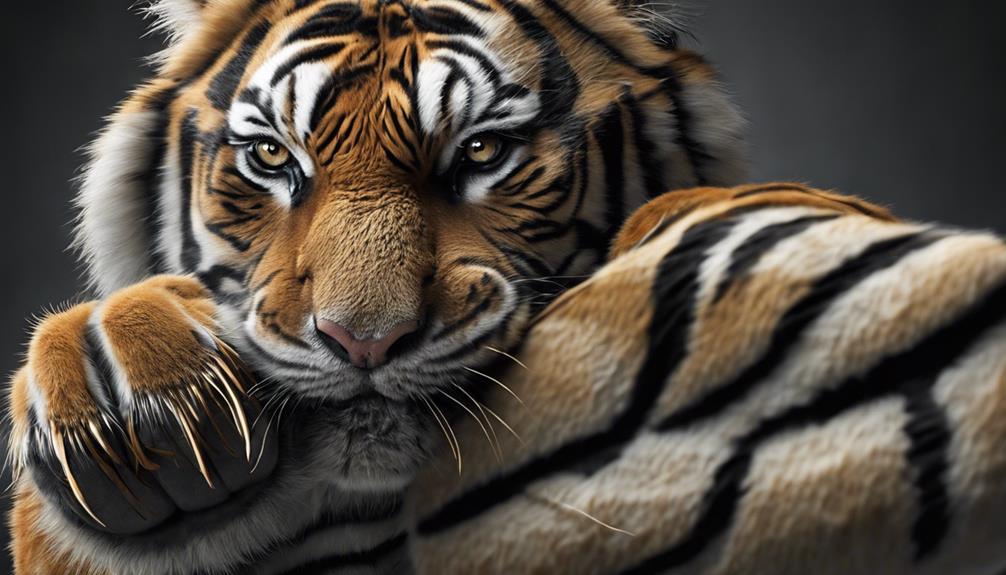
Tiger paw strength is vital for their survival in the wild. Their paws can exert immense force, aiding in hunting and climbing.
With retractable claws and unique pads, tigers have developed exceptional grip and stability, essential for their hunting techniques.
Tiger Paw Anatomy
How does the unique anatomy of a tiger's paw contribute to its remarkable strength and hunting abilities?
Tigers, much like house cats but on a grander scale, possess fascinating paw structures that play an essential role in their survival. Here are three key features that make a tiger's paw anatomy exceptional:
- Retractable Claws: Tigers have retractable claws that can extend up to 4 inches, aiding them in hunting and climbing.
- Textured Paw Pads: The paw pads of tigers are covered in rough, textured skin that provides excellent traction and grip, allowing for swift movements during hunting.
- Muscular Structure: The muscular structure of a tiger's paw enables powerful swipes and precise movements, essential for capturing prey much larger than themselves.
Grip and Stability
With their retractable claws and powerful muscular structure, tiger paws excel in providing exceptional grip and stability in various hunting scenarios.
Tiger paws feature soft pads and sharp claws that allow for gripping prey with precision and strength. These adaptations provide the necessary stability during high-speed chases and maneuvering through different terrains, enabling tigers to move swiftly and silently as they stalk their prey.
The powerful muscles in tiger paws further enhance grip strength, aiding in catching and securely holding onto prey during the hunt. This unique combination of features in tiger paws not only assists in hunting but also showcases the incredible evolutionary adaptations that have made tigers successful predators in their natural habitats.
Hunting Techniques
Utilizing their powerful paw strength, tigers employ a combination of retractable claws and muscular prowess to secure prey during their hunting endeavors. Tiger paws are remarkable tools for hunting, allowing these majestic felines to navigate their environment with precision and agility. Here are some fascinating facts about how tiger paws contribute to their hunting success:
- Tiger paws have retractable claws that can grow up to 4 inches long.
- The pads on a tiger's paw are covered in rough, textured skin for traction.
- Tigers use their strong paws to grasp and subdue prey during hunts.
These unique adaptations enable tigers to exert forces of over 500 pounds, making them formidable predators in the wild.
Elephant Paw Pads
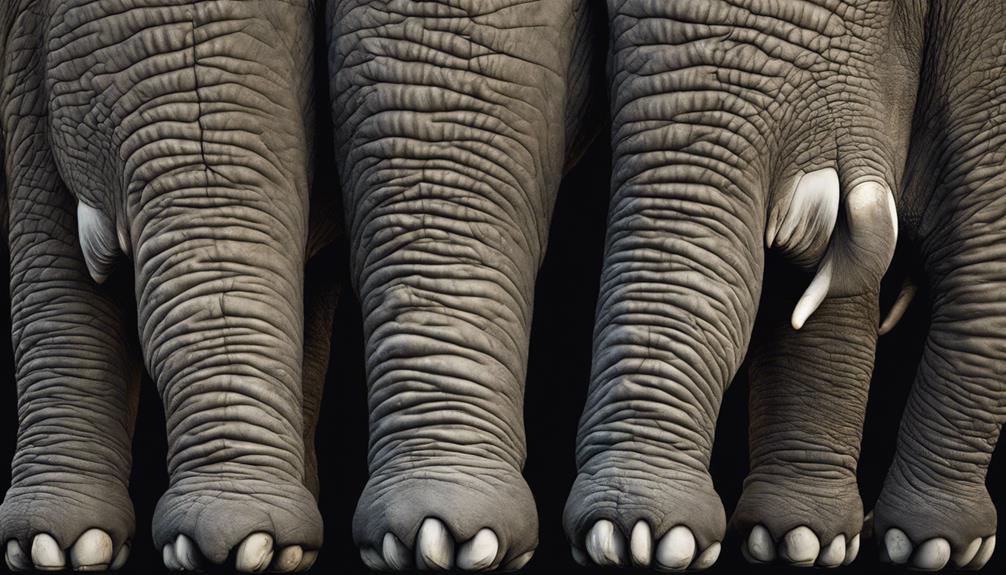
Supporting the immense weight of elephants, their paw pads consist of thick, cushioned structures made of fatty tissue and collagen. These specialized paw pads not only provide protection and shock absorption but also offer a unique texture that aids in grip and prevents slipping on various terrains. The texture of the pads is essential for elephants as it helps them maintain balance and stability while walking or running, even over challenging landscapes. Additionally, the flexibility and durability of elephant paw pads enable these majestic creatures to traverse long distances without causing damage or discomfort.
Understanding the anatomy and function of elephant paw pads is important in appreciating how these incredible animals navigate their environments with grace and power. By studying the design and composition of their paws, we gain insight into the remarkable adaptations that allow elephants to thrive in diverse habitats and fulfill their critical roles in the ecosystem.
Frequently Asked Questions
What Animals Have the Paw Feature?
I love how animals like cats, dogs, bears, and raccoons have paws, essential for various activities. Their adaptations for climbing, swimming, running, digging, or grasping objects fascinate me. Paws truly showcase nature's brilliance.
What Is the Cutest Animal in the World?
For me, the cutest animal in the world is subjective, varying based on personal preferences. Some popular contenders include puppies, kittens, pandas, and baby seals. Factors like big eyes, round faces, and playful behavior contribute to cuteness.
What Animal Has Large Paws and Is Fluffy?
I know an animal with large paws and a fluffy coat. Those paws aren't just cute; they're like built-in snowshoes! Perfect for stealthy hunting. It's the Canada Lynx, a master of snowy terrains.
Are Cat Paws Unique?
Cat paws are indeed unique, with their intricate design tailored for various functions. These paws provide cats with balance, sensory information, and even insulation. Their ability to detect vibrations and communicate through paw movements truly sets them apart.
What Animals with Paws Can Be Found in Maryland?
Maryland’s common birds guideavian life includes animals with paws like raccoons, foxes, and otters. These creatures can be found throughout the state, inhabiting forests, marshlands, and urban areas. Observing Maryland’s common birds guideavian life in their natural habitat can be an exciting and educational experience for nature enthusiasts.
Conclusion
To sum up, animals with paws are captivating creatures with unique abilities that help them navigate their environments. From the dexterity of a raccoon's paw to the strength of a tiger's paw, each animal's paw serves a specific purpose in their survival.
Just like our hands and feet, animal paws are essential tools for their daily activities, showcasing the incredible diversity and adaptability of the animal kingdom.
Next time you see a paw print, remember the remarkable capabilities of these creatures.
